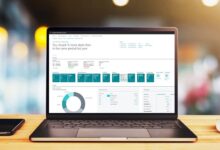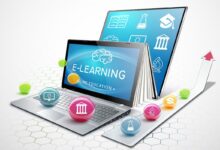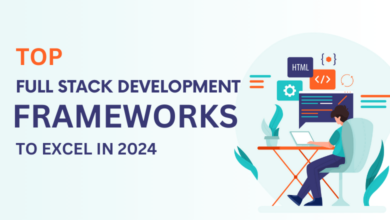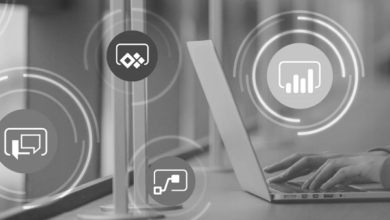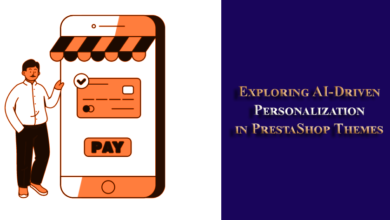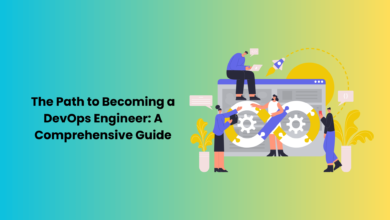ERP and Internet of Things (IoT): Transforming Industries through Integration

The combination of ERP and IoT has emerged as a game-changer in today’s interconnected world, and it’s having an impact on businesses all over the world. By connecting commonplace objects to the internet in real-time, IoT enables real-time data gathering and analysis, while enterprise resource planning (ERP) simplifies company operations and promotes data-driven decision-making.
Benefits, application cases, and potential future ramifications of combining enterprise resource planning (ERP) and the internet of things (IoT) are discussed in this article.
Understanding ERP:
Financials, HR, the supply chain, and CX may all be managed from a single interface in modern enterprise resource planning (ERP) systems. Businesses may optimize their operations, increase efficiency, and boost production with the use of these systems’ many features, such as data integration, process automation, and analytics. SAP, Oracle, and Microsoft Dynamics are three of the most well-known ERP software packages available.
Understanding IoT:
The term “Internet of Things” is used to describe the global network of physical devices equipped with sensors, software, and network connectivity with the purpose of collecting and exchanging data. Industries as diverse as manufacturing, retail, healthcare, and transportation all benefit from the use of Internet of Things devices.
The Internet of Things (IoT) allows businesses to collect real-time insights, automate processes, and make data-driven choices by seamlessly linking physical things with digital systems.
Integration of ERP and IoT:
There are many benefits for businesses when ERP and IoT are combined. Organizations may improve their visibility, forecasting, inventory management, and supply chain optimization by integrating IoT-generated data into enterprise resource planning (ERP) software solution. In addition, Internet-of-Things (IoT) sensors and devices can offer real-time monitoring of assets, which enables predictive maintenance, lessens downtime, and boosts operational efficiency.
Data security and compatibility are just two of the obstacles that must be overcome before integration can bring about the desired results.
Use Cases of ERP and IoT Integration:
- Manufacturing Industry: Optimizing supply chain management, automating inventory tracking, and enabling predictive maintenance of machinery are just a few ways in which ERP and IoT integration revolutionizes manufacturing. Better production planning, less waste, and quicker reactions to consumer needs are all made possible by collecting data in real time.
- Retail Industry: In retail, the use of Internet of Things (IoT) sensors and RFID technologies combined with ERP systems improves inventory management and the customer experience. While customer insights derived from IoT data allow for personalized marketing campaigns and customized promotions, smart shelves monitor stock levels automatically, informing managers when replenishment is needed.
- Healthcare Industry: Healthcare operations are simplified when ERP is combined with IoT-enabled medical devices and remote patient monitoring systems. Better healthcare results can be achieved through remote consultations, prompt interventions, and predictive analytics when real-time patient data is delivered in a secure manner. Equipment upkeep is simplified and expenditures are cut using IoT-based asset tracking.
Future Trends and Implications:
As the integration of ERP and IoT continues to evolve, several future trends and implications are set to shape industries and drive innovation. Here are some key trends and their potential implications:
• Advanced Analytics and Artificial Intelligence (AI):
As analytics and AI continue to progress, more complex capabilities will be made available for ERP and IoT integration. With the use of predictive analytics, businesses will be able to plan ahead for repairs, enhance workflow, and avoid reactive problems.
With the help of AI algorithms, we will be able to better allocate resources, create more personalized experiences for our customers, and increase operational efficiency.
• Edge Computing:
ERP and IoT integration will be greatly influenced by the rise of edge computing, in which data is processed closer to the source rather than using cloud infrastructure exclusively. Edge computing decreases reliance on always-on connectivity, improves latency, and speeds up responses in real time. Decisions may be made more quickly, which is especially useful in industries like manufacturing and healthcare where prompt action is required.
• Blockchain Technology:
The potential for improving data security, transparency, and trust through the combination of ERP and IoT with blockchain technology is substantial. Data created by IoT devices can have its integrity and immutability guaranteed by the distributed ledger system of blockchain, allowing for more secure transactions and cutting out the middleman.
Supply chain management, asset monitoring, and compliance in industries like manufacturing and logistics can be transformed by this technology.
• Expansion of IoT Ecosystems:
More and more devices and software will become part of the Internet of Things ecosystem as time goes on. Because of this expansion, there will be more opportunities to connect ERP systems to other types of IoT devices, like those found in smart homes and autonomous vehicles.
By bringing together a wide range of IoT devices, businesses will have access to more detailed information from which to draw conclusions and make decisions.
• Enhanced Cybersecurity Measures:
Strong cybersecurity measures will become critical as ERP and IoT integration grows. To protect sensitive data during transmission between ERP systems and IoT devices, businesses will need to invest in cutting-edge security protocols, encryption techniques, and intrusion detection systems.
Further, best practices for assuring the security and integrity of integrated systems will need to be established through industry-wide collaborations and standardization efforts.
Implications:
- The incorporation of real-time data analysis, automated processes, and predictive abilities has increased operational efficiency and production.
- Enhanced satisfaction of customers by means of individualized service, specific advertising, and proactive assistance.
- Supply chain, inventory, and asset tracking have been streamlined, which has led to cost savings and better use of available resources.
- improved ability to quickly respond to changes in the market through the use of data-driven decision making and flexible workflows.
- Product quality and customer satisfaction both increased thanks to better preventative maintenance and swifter response to problems.
- Invention of new services and sources of income made possible via the Internet of Things.
- The elimination of information silos requires more cooperation and integration between departments and activities throughout an organization.
- Industry disruption, innovation promotion, and competitiveness maintenance for businesses in the digital age.
Conclusion:
ERP and IoT integration offers tremendous possibilities for businesses that want to streamline processes, boost output, and gain a market advantage. Combining enterprise resource planning (ERP) systems with IoT devices has clear advantages across industries.
To succeed in the digital age, businesses need to adopt new technologies, adjust to shifting market conditions, and harness the potential of ERP and IoT connectivity.
